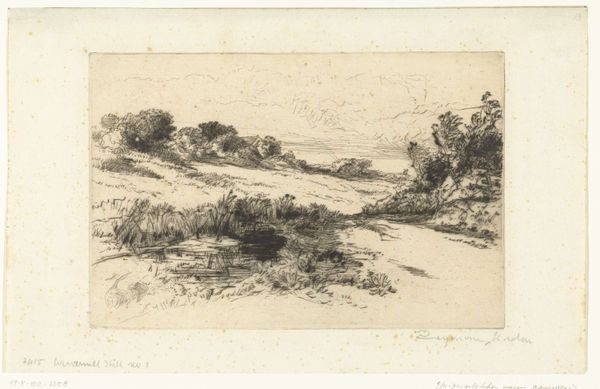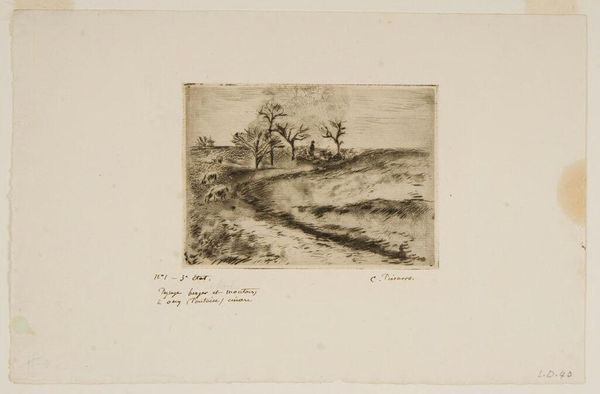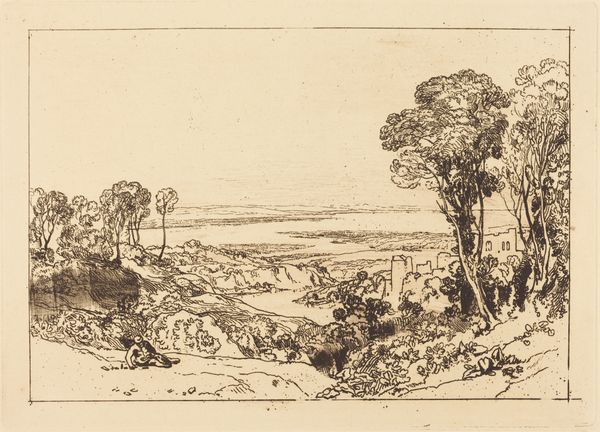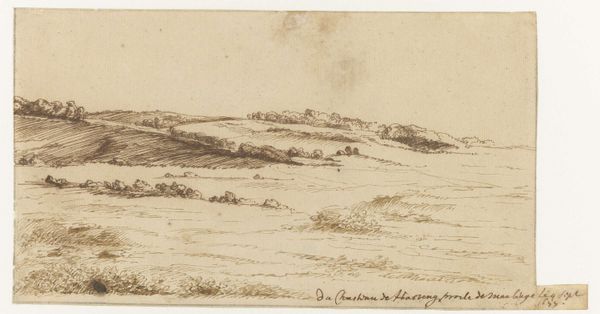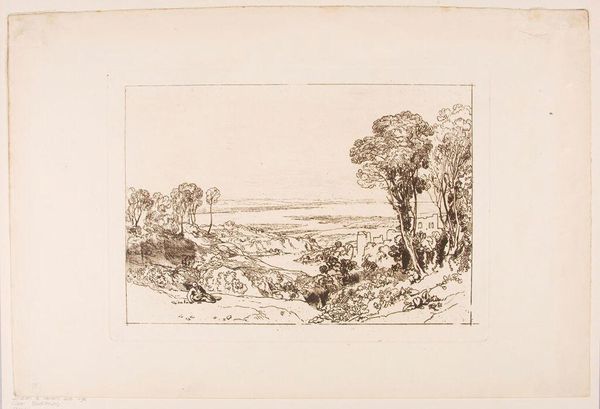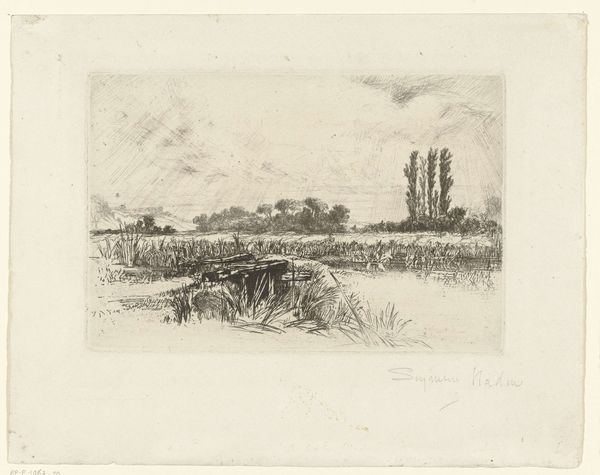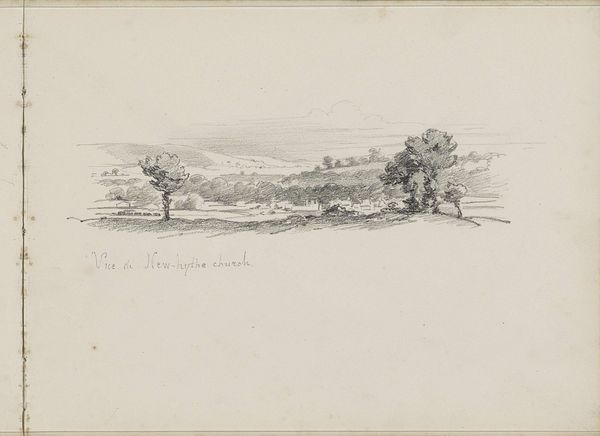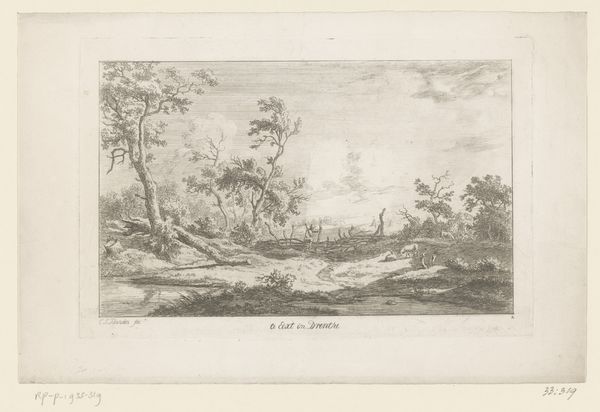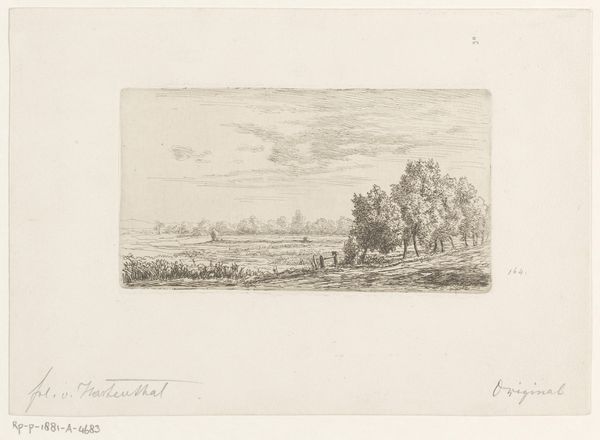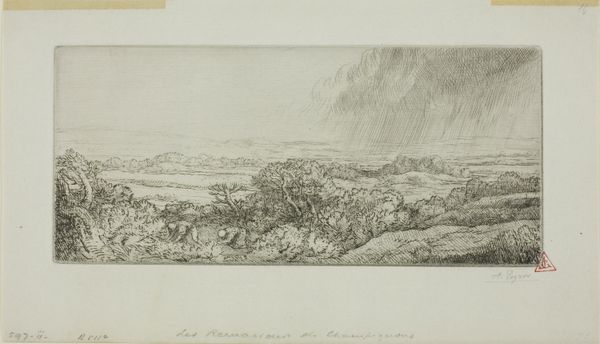
Copyright: National Gallery of Art: CC0 1.0
Editor: This is "Smailholm Tower," an etching by David Young Cameron from 1888. I find the starkness of the lines, particularly in the fields, really striking. It’s like the land itself is speaking, but in a harsh, almost unforgiving tone. What's your read on it? Curator: The starkness resonates with a romanticised, yet critical, gaze upon rural Scotland. The late 19th century witnessed massive social upheaval due to industrialisation and land reforms. The etching, with its solitary tower, evokes a sense of loss of traditional ways of life. It asks: Who were these lands for? How did the geometric land divisions impact Scottish identity and its relationship to the land? Editor: I hadn’t considered the land divisions. The tower itself seems so small and distant, almost like a memory fading away. Curator: Precisely. Consider the materiality – an etching allows for incredibly detailed linework. Think about the social commentary implied. It could critique land ownership, evoking conversations about displacement and the romanticized version of Scottish history celebrated at the time. The lines etched deep are literally cutting through history. Do you see this as a straightforward landscape, or is there something more complex at play? Editor: Definitely more complex. The way you connect the land divisions and social context makes me see a tension between the idealised view of the landscape and the reality of the time. It's not just a pretty picture, but a statement. Curator: Absolutely. The tension is precisely where the artwork generates its power. Reflecting on these works prompts consideration about land rights, labour, and who writes history within changing social landscapes. Editor: I will definitely keep these insights in mind when thinking about art! Thanks so much.
Comments
No comments
Be the first to comment and join the conversation on the ultimate creative platform.
